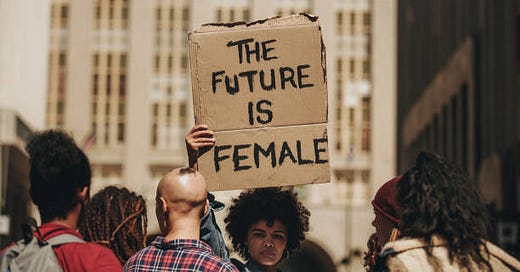When understanding voter turnout, it is essential to analyze the various factors that can affect an individual’s voting behaviors. These factors include socioeconomic background, ethnicity, and, believe it or not, gender. The relationship between gender and voting came to greater light under the 19th Amendment. Ratified on August 18, 1920, the 19th Amendment granted women the right to vote. Knowing this information, it can be shocking to realize that women were given the right to vote just over 100 years ago. More so, women have been fighting for equal gender rights ever since. The gender gap still persists, especially in politics. Political research studies have demonstrated that women continue to be underrepresented in male-dominated fields, including the political sphere.
A research analyzing the role of gender differences in voting behaviors and civic engagement introduced the idea of social norms and how they can have an impact on the gender gap in voting behaviors. The Social Role Theory presents that each gender plays into their own stereotypes (Eagly 1999). Thus, men and women act differently due to their gender expectations and roles. For example, a research study conducted in Belgium in 2011 tested the Social Role Theory on high schoolers, discovering that male adolescents have a higher rate of social participation than females (Cicognani et al. 2011). Although Europe and the United States have different education systems, we can still use the data to analyze the gender disparities in high schoolers’ social, civic, and political participation. More recently, a 2020 interview with political scientist Dr. Jennifer Wolak (University of Colorado at Boulder) supported these findings. Wolak acknowledged that confidence and assertiveness are seen as more of masculine traits than feminine traits. With self-confidence being a key ingredient for “higher levels of political interest and efficacy,” this can be another reason for the persistent gender gap in politics (“Revisiting the Gender Gap” 2020).
Despite the fact that these studies and many more have confirmed that men are more politically active than females, women are currently more politically involved than ever. In 2021, “5.9 percent of elected Heads of State (9 out of 152) and 6.7 percent of Heads of Government (13 out of 193) were women (“Women in politics” 2021). These statistics may seem small but demonstrate growth when compared to data from previous years. Additionally, this year alone, 11.3 percent of countries have women Heads of State (17 out of 151 countries, monarchy-based systems excluded), and 9.8 percent have women Heads of Government (19 out of 193) (“Women in power” 2023).
The question is: How can we ensure that increases in women's political involvement continue? To start, organizations that encourage women to become more politically engaged need to be provided with an abundant amount of resources to flourish. We also need to expose women, especially young girls, to the political spheres and allow them to thrive in a gender-sensitive space.
One example is New Voters. New Voters is one of the many nonprofit organizations with the goal of encouraging youth civic engagement. New Voters focuses on amplifying the youth voice in marginalized communities, especially women’s voices. Our student-led team is also made up of 65-70% young women, with a female founder and a female Executive Director. As time goes on, women are becoming increasingly more politically engaged and interested from an earlier age.
Throughout history, women have proven themselves powerful in the fight for equal rights and continue to do so for their political rights. Their voices are finally being heard. The future is female.



